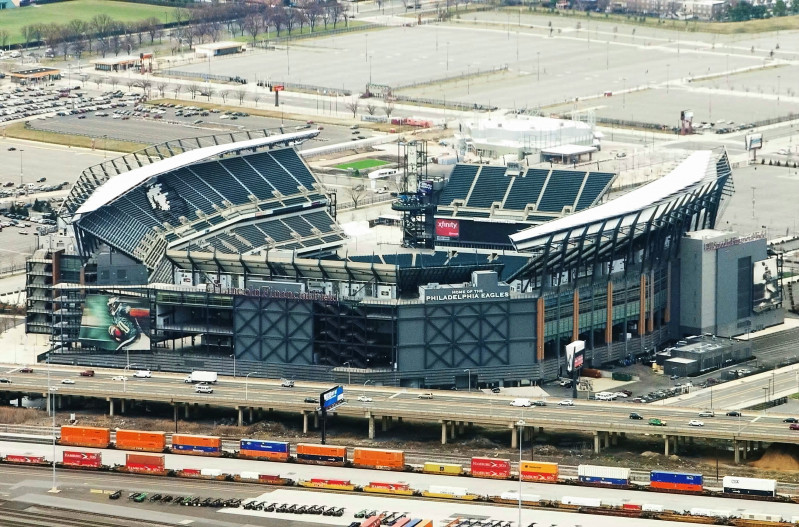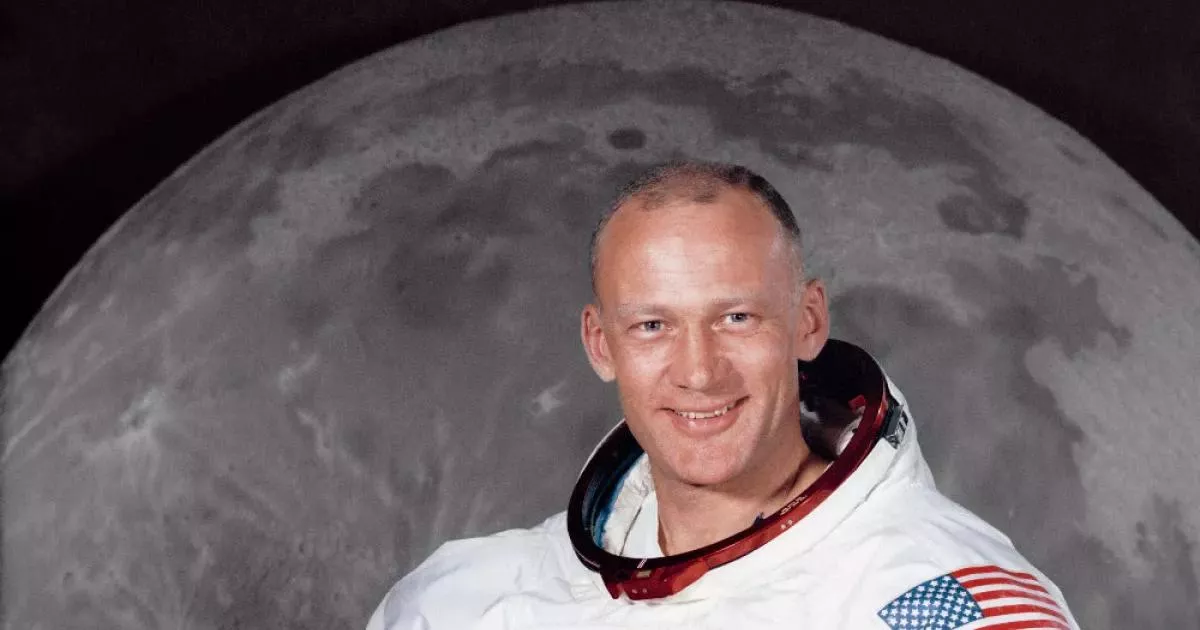From career breakthroughs to professional milestones, explore how Buzz Aldrin made an impact.
Buzz Aldrin is an American former astronaut, engineer, and fighter pilot, best known as the second person to walk on the Moon during the Apollo 11 mission in 1969. As the Lunar Module Eagle pilot, he followed commander Neil Armstrong onto the lunar surface. Prior to Apollo 11, Aldrin piloted the Gemini 12 mission in 1966, during which he performed three spacewalks. With the passing of Neil Armstrong and Michael Collins, Aldrin is the last surviving member of the Apollo 11 crew. His contributions to space exploration have cemented his place as a pivotal figure in scientific and historical achievements.
June 5, 1951: Graduation from West Point
On June 5, 1951, Aldrin graduated third in the class of 1951 with a Bachelor of Science degree in mechanical engineering from West Point.
1951: Graduation from West Point
In 1951, Aldrin graduated third in his class from the United States Military Academy at West Point with a degree in mechanical engineering.
December 1952: Assignment to 16th Fighter-Interceptor Squadron
In December 1952, Aldrin was assigned to the 16th Fighter-Interceptor Squadron, part of the 51st Fighter-Interceptor Wing, based at Suwon Air Base during the Korean War.
May 14, 1953: First MiG-15 shot down
On May 14, 1953, Aldrin shot down his first MiG-15 fighter while flying south of the Yalu River during the Korean War.
June 4, 1953: Second aerial victory
On June 4, 1953, Aldrin achieved his second aerial victory by shooting down a MiG fighter during an attack on an airbase in North Korea.
June 8, 1953: Life Magazine featured Aldrin's gun camera footage
On June 8, 1953, Life magazine featured gun camera footage taken by Aldrin of a pilot ejecting from his damaged aircraft.
December 1953: End of Korean tour and assignment at Nellis
In December 1953, Aldrin's year-long tour in Korea ended, and he was assigned as an aerial gunnery instructor at Nellis Air Force Base.
December 1954: Aide-de-camp to Brigadier General Zimmerman
In December 1954, Aldrin became an aide-de-camp to Brigadier General Don Z. Zimmerman, the Dean of Faculty at the United States Air Force Academy.
1955: Graduation from Squadron Officer School
In 1955, Aldrin graduated from the Squadron Officer School at Maxwell Air Force Base in Alabama.
1956: Flying F-100 Super Sabres in West Germany
From 1956, Aldrin flew F-100 Super Sabres equipped with nuclear weapons as a flight commander in West Germany.
1959: Enrolled at MIT
In 1959, Aldrin enrolled as a graduate student at the Massachusetts Institute of Technology through the Air Force Institute of Technology.
1959: Flying F-100 Super Sabres in West Germany
Until 1959, Aldrin flew F-100 Super Sabres equipped with nuclear weapons as a flight commander in West Germany.
1962: Rejected from Astronaut Group 2
In 1962, Aldrin's application to join NASA's Astronaut Group 2 was rejected because he was not a test pilot.
January 1963: Earned Sc.D. degree in astronautics
In January 1963, Aldrin earned a Sc.D. degree in astronautics from MIT with his thesis on Line-of-Sight Guidance Techniques for Manned Orbital Rendezvous.
May 15, 1963: NASA announced another round of selections
On May 15, 1963, NASA announced another round of astronaut selections, requiring either test pilot experience or 1,000 hours of jet flying time.
October 18, 1963: Selection for NASA's Astronaut Group 3
On October 18, 1963, Aldrin was selected as one of the fourteen members of NASA's Astronaut Group 3, making him the first astronaut with a doctoral degree.
1964: Charles Duke wrote master's degree at MIT
In 1964, Charles Duke, another USAF officer, wrote his master's degree at MIT under the supervision of Laurence R. Young.
June 17, 1966: Designated prime crew for Gemini 12
On June 17, 1966, Jim Lovell and Buzz Aldrin were designated as the prime crew for Gemini 12, with Gordon Cooper and Gene Cernan as their backups.
November 11, 1966: Launch of Gemini 12
On November 11, 1966, Gemini 12 was launched from Launch Complex 19 at Cape Canaveral. Aldrin helped Lovell to rendezvous manually using a sextant and rendezvous charts he helped create.
November 12, 1966: Solar eclipse viewed from Gemini 12
On November 12, 1966, Lovell and Aldrin photographed the solar eclipse over South America through the spacecraft windows during the Gemini 12 mission.
1966: First space flight on Gemini 12
In 1966, Aldrin's first space flight was on Gemini 12, during which he spent over five hours on extravehicular activity.
1966: Pilot of Gemini 12 mission
In 1966, Buzz Aldrin served as the pilot of the Gemini 12 mission, during which he performed three spacewalks.
November 20, 1967: Assignment to Apollo 9 Backup Crew
On November 20, 1967, Lovell and Aldrin were assigned as the backup crew for Apollo 9, with Neil Armstrong as commander, Lovell as command module pilot (CMP), and Aldrin as lunar module pilot (LMP).
July 21, 1969: Walking on the Moon
On July 21, 1969, Aldrin set foot on the Moon at 03:15:16 UTC, nineteen minutes after Armstrong. He also held a private communion ceremony, the first food and liquid consumed there.
September 16, 1969: Astronauts Address Joint Session of Congress
On September 16, 1969, the Apollo 11 astronauts addressed a joint session of Congress, expressing gratitude for past support and urging continued funding for space exploration.
November 5, 1969: Return to the US After World Tour
On November 5, 1969, the Apollo 11 crew returned to the United States, concluding a 38-day world tour that included visits to 22 foreign countries and meetings with numerous world leaders.
1969: Awarded the Collier Trophy and General Thomas D. White USAF Space Trophy
In 1969, Buzz Aldrin and the Apollo 11 crew were awarded the Collier Trophy. Additionally, they received the 1969 General Thomas D. White USAF Space Trophy.
1969: Apollo 11 mission
In 1969, Buzz Aldrin was the Lunar Module Eagle pilot on the Apollo 11 mission. He was the second person to walk on the Moon, after Neil Armstrong.
October 1970: Tour of NASA Space Centers with Soviet Cosmonauts
In October 1970, after the Apollo 11 mission, Aldrin joined Soviet cosmonauts Andriyan Nikolayev and Vitaly Sevastyanov on their tour of the NASA space centers.
1970: Dr. Robert H. Goddard Memorial Trophy, Harmon Trophy, and Hubbard Medal
In 1970, Buzz Aldrin and the Apollo 11 crew received several awards, including the National Space Club's Dr. Robert H. Goddard Memorial Trophy for their spaceflight achievement. They also received the international Harmon Trophy for aviators, conferred by Vice President Spiro Agnew in 1971, and the Hubbard Medal of the National Geographic Society, also in 1970.
July 1, 1971: Aldrin Returns to the Air Force
On July 1, 1971, with the Apollo program concluding and limited prospects at NASA, Aldrin, then a colonel, decided to return to the Air Force.
1971: Leaving NASA
In 1971, Aldrin left NASA and became Commandant of the U.S. Air Force Test Pilot School.
1971: Received the Harmon Trophy
In 1971, Vice President Spiro Agnew conferred the international Harmon Trophy for aviators to Buzz Aldrin and the Apollo 11 crew.
February 1972: USAF Aerospace Research Pilot School Renamed
In February 1972, General George S. Brown informed Aldrin that the USAF Aerospace Research Pilot School was being renamed the USAF Test Pilot School and astronaut training was being dropped, signaling a decline in the Air Force's space interests.
March 1, 1972: Aldrin's Retirement from the Air Force
On March 1, 1972, Aldrin retired from the Air Force as a colonel after 21 years of service, with his father and General Jimmy Doolittle attending his retirement ceremony.
1972: Retirement from the Air Force
In 1972, Aldrin retired from the Air Force after 21 years of service.
1985: Joins University of North Dakota
In 1985, Aldrin joined the University of North Dakota's (UND) College of Aerospace Sciences and helped develop its Space Studies program. He also brought David Webb from NASA to serve as the department's first chair.
1985: Aldrin Cycler Proposed
In 1985, Aldrin proposed a special spacecraft trajectory now known as the Aldrin cycler, which offers reduced cost of repeated travel to Mars by using less propellant.
1996: Founded Starcraft Boosters, Inc.
In 1996, Aldrin founded Starcraft Boosters, Inc. (SBI) to design reusable rocket launchers.
1999: Langley Gold Medal Award
In 1999, Buzz Aldrin and the Apollo 11 crew received the Smithsonian Institution's Langley Gold Medal for aviation, presented by Vice President Al Gore. Following the ceremony, the crew visited the White House and gifted President Bill Clinton with an encased Moon rock.
2001: Appointment to the Commission on the Future of the United States Aerospace Industry
In 2001, Buzz Aldrin was appointed by President George W. Bush to serve on the Commission on the Future of the United States Aerospace Industry.
2003: Humanitarian Award from Variety, the Children's Charity
In 2003, Buzz Aldrin received the Humanitarian Award from Variety, the Children's Charity, in recognition of his understanding, empathy, and devotion to mankind.
2006: General James E. Hill Lifetime Space Achievement Award
In 2006, Buzz Aldrin was awarded the Space Foundation's highest honor, the General James E. Hill Lifetime Space Achievement Award.
2011: New Frontier Congressional Gold Medal
In 2011, the Apollo 11 crew, including Buzz Aldrin, was awarded the New Frontier Congressional Gold Medal in the Capitol Rotunda. NASA administrator Charles Bolden acknowledged their pioneering role in space exploration during the ceremony.
June 2013: Support for Human Mission to Mars
In a June 2013 opinion piece in The New York Times, Aldrin supported a human mission to Mars, viewing the Moon as a point of departure for humankind to homestead Mars.
2015: Chancellor of the International Space University
In 2015, Buzz Aldrin was named the Chancellor of the International Space University.
2019: Stephen Hawking Medal for Science Communication
In 2019, Buzz Aldrin was awarded the Starmus Festival's Stephen Hawking Medal for Science Communication for Lifetime Achievement.
May 5, 2023: Honorary Promotion to Brigadier General
On May 5, 2023, Buzz Aldrin received an honorary promotion to the rank of brigadier general in the United States Air Force and was made an honorary Space Force guardian.
2040: Mars Colony Establishment Target
By the year 2040, Aldrin's master plan for Mars colonization envisions astronauts establishing a colony on Mars, with a tour of duty of ten years.
Mentioned in this timeline

Donald John Trump is an American politician media personality and...

Howard Stern is a renowned American radio personality recognized for...

George W Bush the rd U S President - is...
New Zealand is an island country located in the southwestern...

Al Gore served as the th U S Vice President...
NASA the National Aeronautics and Space Administration is an independent...
Trending

1 month ago Shane Gillis Announces Massive 2026 Homecoming Show at Lincoln Financial Field

2 months ago Beyoncé and Jay-Z Spotted in Qatar: Headscarf Sparks Debate.
5 months ago USDA invests $152M in Iowa rural communities, announced by Secretary Rollins at Iowa State Fair.
9 months ago Suriname faces discrimination concerns, Dutch appeal, and a company rebranding for exploration.

7 months ago Robert Plant reflects on Led Zeppelin's best performance and early vocal dislikes.

3 months ago Heidi Klum Shares Rare Family Photos Celebrating Daughter Lou's Sweet 16th Birthday
Popular

Stranger Things created by the Duffer Brothers is a popular...

XXXTentacion born Jahseh Dwayne Ricardo Onfroy was a controversial yet...
The Kennedy Center Honors are annual awards recognizing individuals and...
Turning Point USA TPUSA is an American nonprofit organization founded...

Bernie Sanders is a prominent American politician currently serving as...

Candace Owens is an American conservative political commentator and author...
